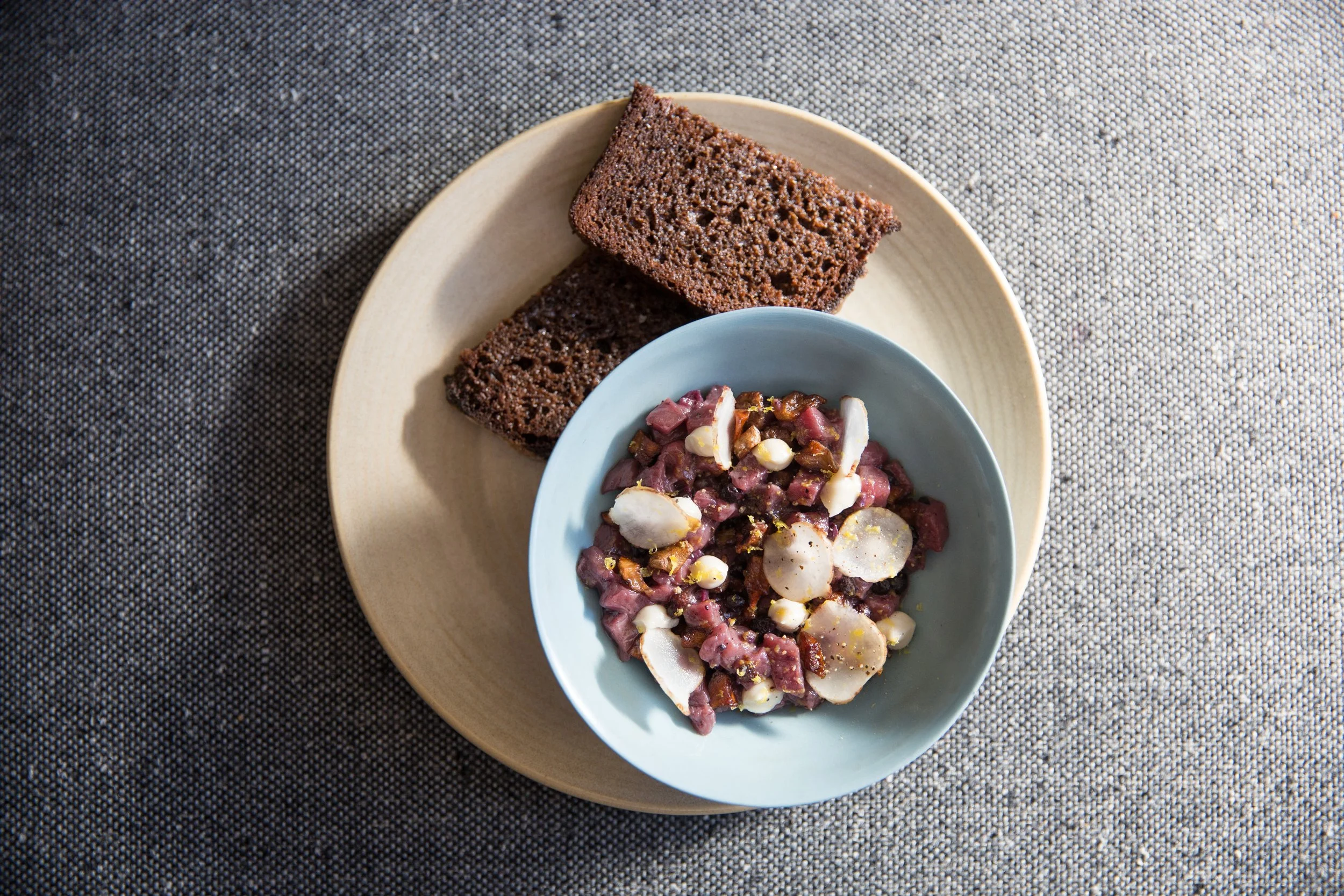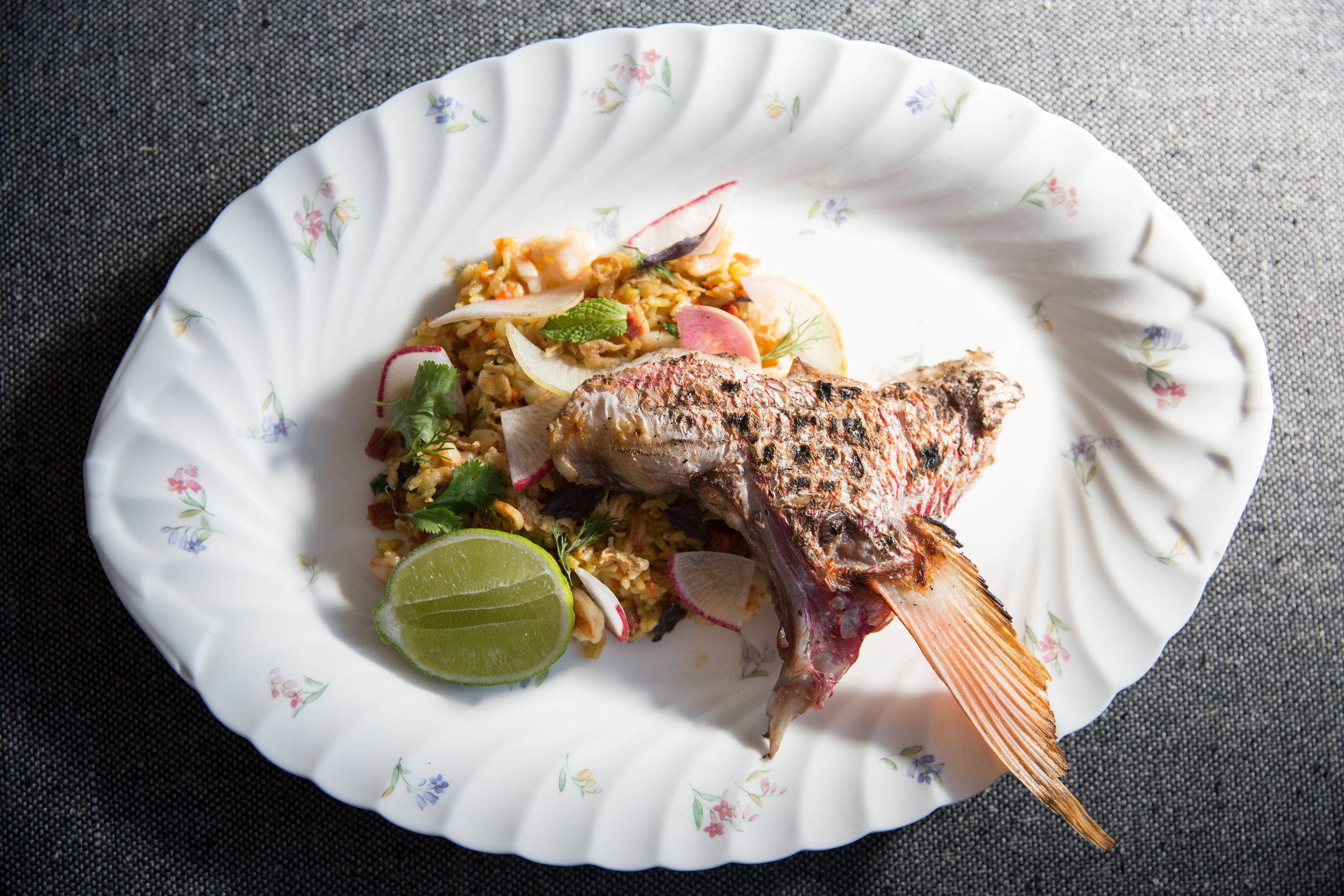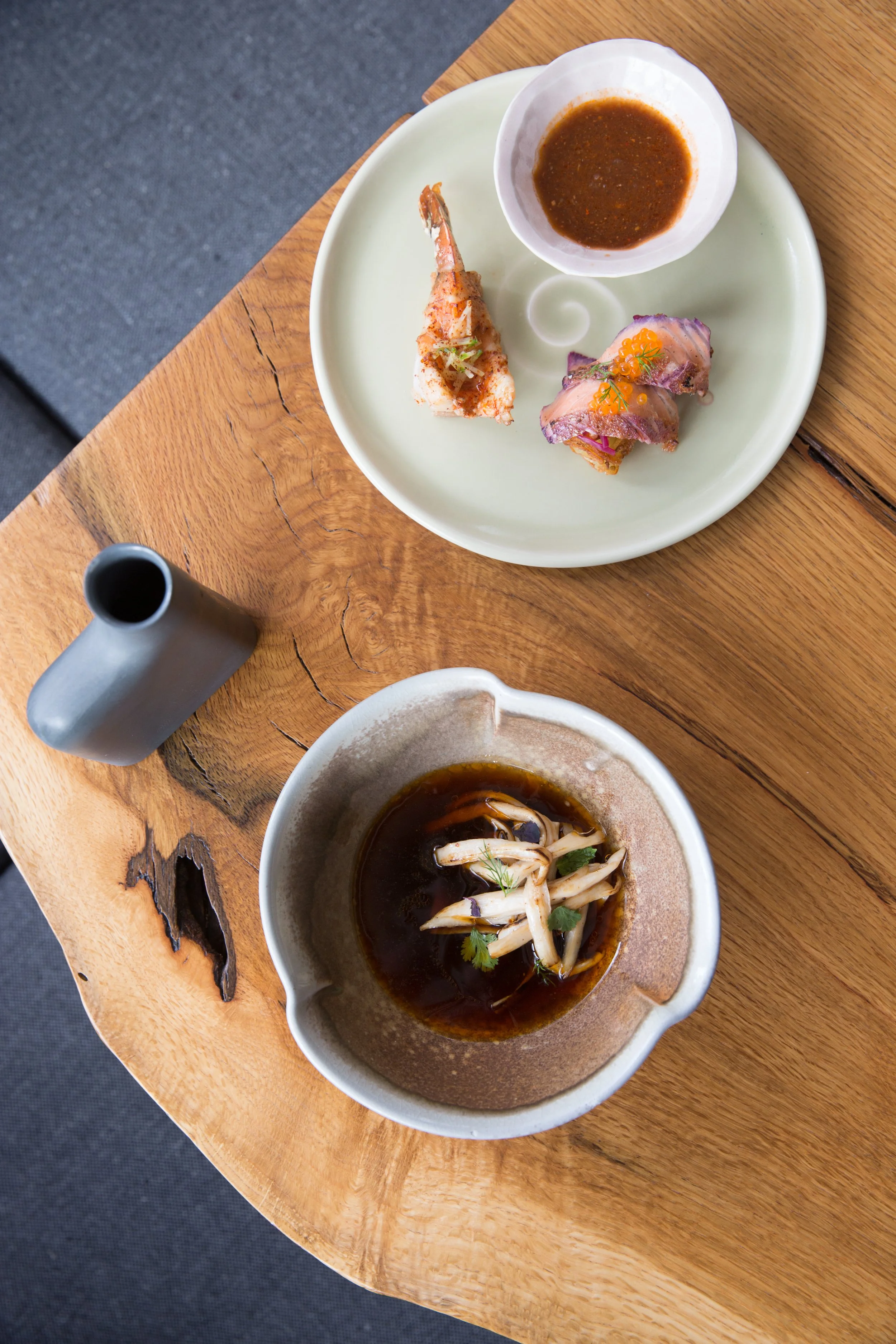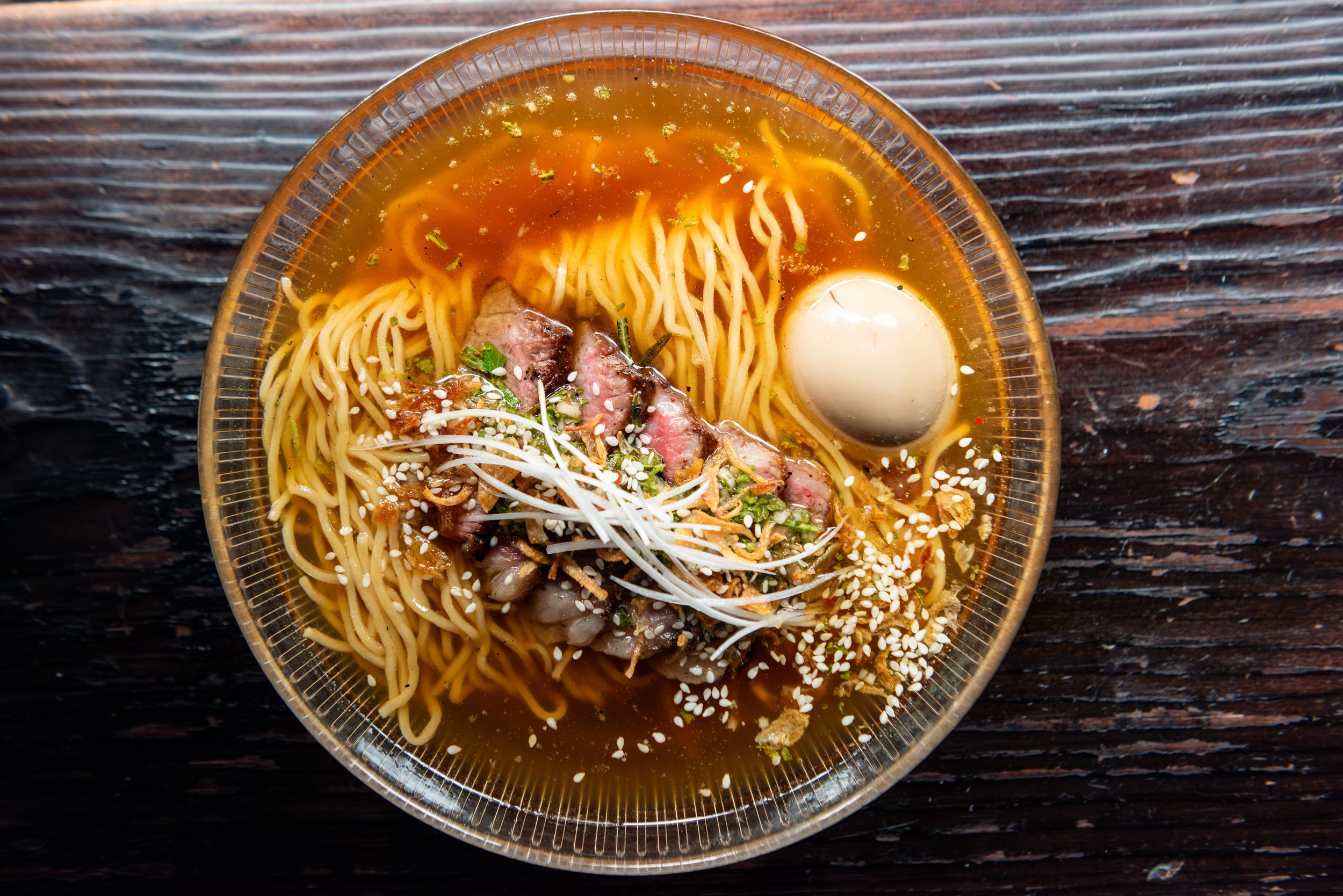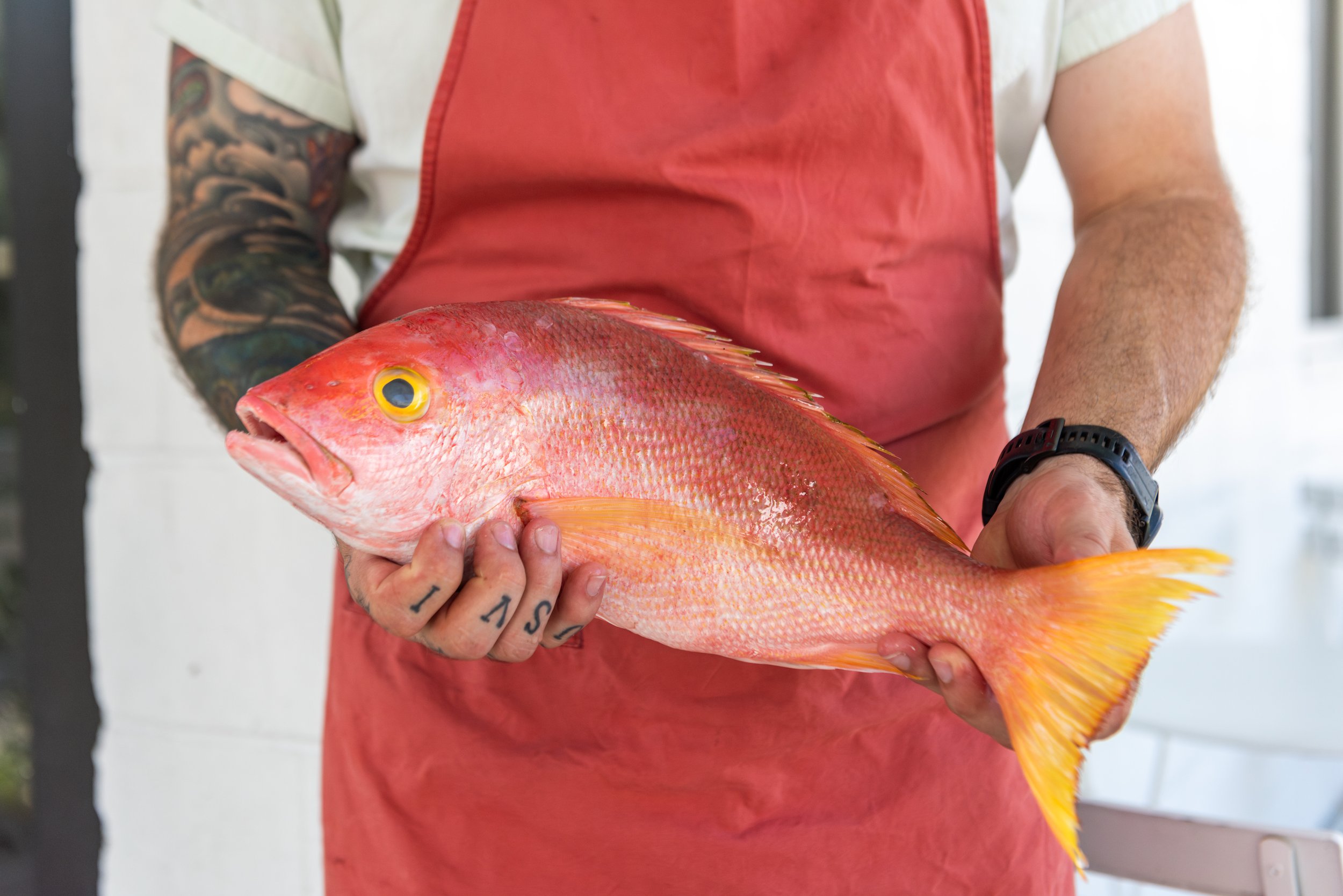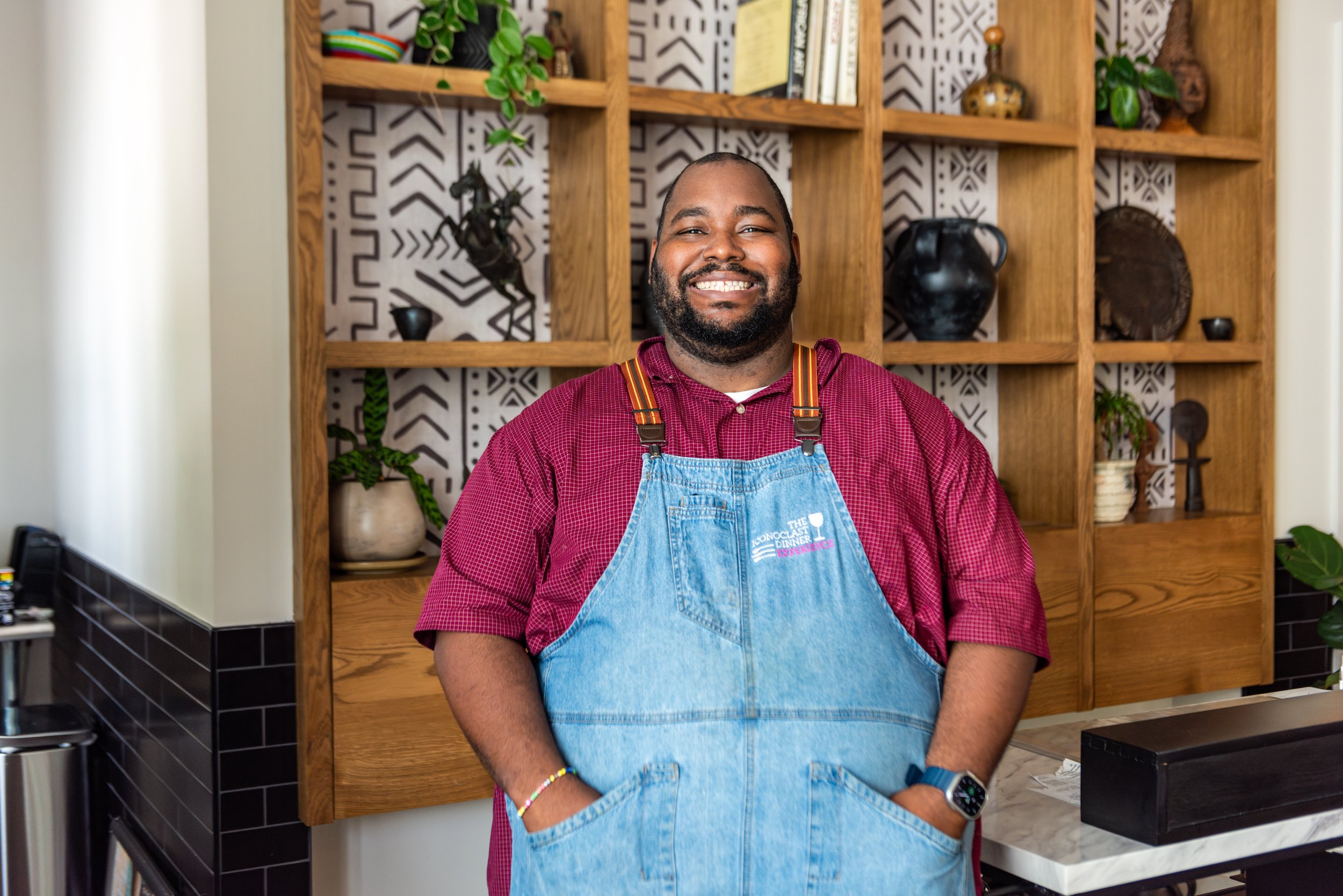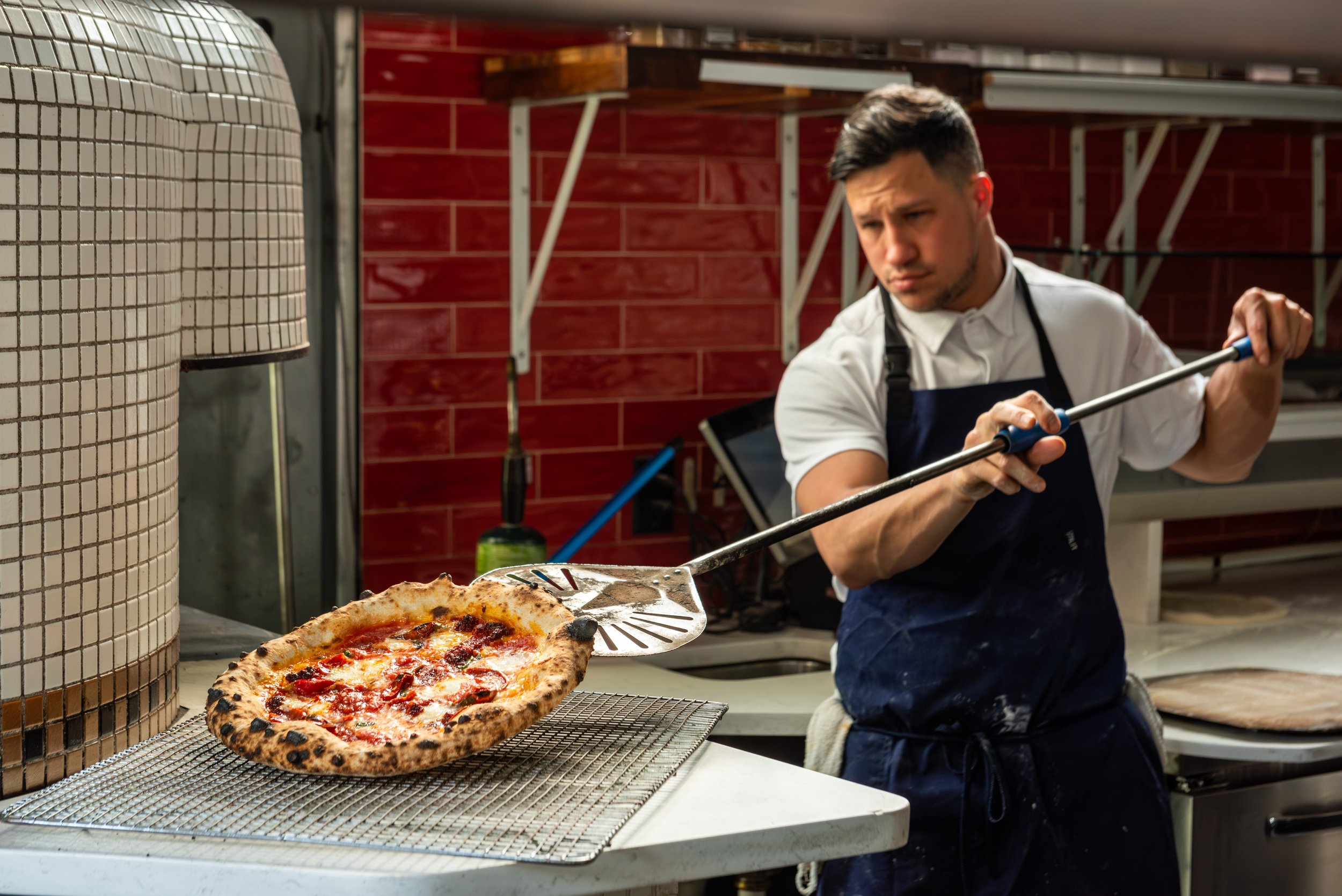Bring Your Own Fine Dining
For Chef Jon Nodler, fine-dining is personal.
Mike Fry, Samantha KinCaid, and JOn Nodler of Cadence | Photos: Caroline Hatchett
Born just outside Minneapolis, Jon Nodler cooks from his head down to his Midwestern taproots. Take his Wild Rice and Nebrodini Mushroom Soup, a dish from his New York days at High Street on Hudson.
“Necessity is the mother of invention. I wanted something that tasted like Minnesota, and I was willing to go outside our strict regional sourcing for it, because it’s personal to me,” says Nodler. “The dish was [inspired by] the soup my parents used to make with store bought cream of mushroom and wild rice. This rice is from Minnesota, wild grown by my uncle.”
Beginning with The Madison Club in Wisconsin and developing through his six year tenure at Ellen Yin and Eli Kulp’s High Street Hospitality Group in Philadelphia and New York, Nodler’s style has come to combine hedonism of flavor, technical intrigue, and beauty. It’s a mode exemplified by a dish of which Pete Wells said had an “oceanic pull as strong as a riptide” when he named Nodler’s Seaweed Bucatini one of “The Top 10 New York Dishes of 2016” in The New York Times. Not bad for a chef who spent the first 26 years of his life landlocked. In the bowl, crepe paper-thin petals of house lobster bottarga—the hue of monarch butterfly wings—are vivid atop ink-black noodles. The more you chew, the more flavor is unleashed.
All this comes together for emotional, memorable, entertaining eating, which, for now, has culminated at Cadence with the chefs’ counter experience—a tasting menu born of Nodler’s collaboration with his fellow High Street alum and co-Chef Mike Fry. Call it omakase- or kaiseki-inspired (or not), Nodler has been fascinated by and passionate about this format and style of service since at least 2014 when he debuted his first intricate counter menu at a.kitchen.
Bison Tartare, Capered Huckleberries, Sunchoke, Cashew Cream, Dried Egg Yolk, Lost Bread Co. Beet-Rye Bread
Grilled Snapper Collar, Delta Blues Seafood Fried Rice, Lobster Bottarga, Shrimp, Chorizo, Lime, Radish, Crispy Shallots, Basil, Mint, Cilantro, and Dill
“It’s less about defining what you’re serving and really about hitting on that emotion you get from this type of dining, capturing us as chefs and cooks in front of guests. It’s about open interaction,” Nodler says.
Typically, counter menus at Cadence consist of nine small plates, with a few courses comprised of a series of “finger food-style” bites. It’s Nodler and Fry’s sensibility distilled, miniaturized from the à la carte menu to a succession of evermore-exciting, evocative bites. Nodler and Fry come out swinging.
“We want something that’s gonna hit you and get your palate going, like a little fresh Dungeness crab salad with persimmon buttermilk, dried persimmon, and smoked uni. It’s sweet, salty, bright, and acidic and served on a spoon, simple to eat,” says Nodler. The dining room at Cadence holds 22 plus the eight-person counter, which is seated two to three times a night Thursday through Saturday, whether or not the tasting menu is being offered. On Sunday and Monday, the whole restaurant may be reserved for the tasting menu experience. Nodler and Fry work from the back kitchen, coming out to the floor to interact with guests as much as possible: finishing plates, answering questions, and even bussing tables. Pastry Chef Sam Kincaid (Nodler’s partner) and another cook, work from the counter—imagine dropping a large, beautifully finished garde manger/dessert station in the center of your dining room.
Prepping and picking-up high-level dishes can be a struggle at Cadence. “It’s a lot,” says Nodler. “It can be very disruptive to normal service. So, in terms of ingredients for the counter menu, we keep them in line with normal dishes, but focus on high-impact ingredients, isolating and highlighting them by building a bite around them.”
The persimmon is an excellent example of a “small investment-high flavor impact” ingredient that has outlets on both menus in multiple forms. “We don’t have a ton of storage or refrigeration, and there is definitely a good amount of cross utilization,” says Fry. Riffing off the persimmon-crab dish from the counter menu, à la carte diners are served a surprise persimmon cream soda. “We make a persimmon tea blended with buttermilk, ginger, turmeric, salt, and lime and carbonate it in an iSi syphon. It’s creamy from the buttermilk and carbonated like soda, so it’s like Guinness on nitro,” Fry says.
American Omakase: Red Cabbage Kraut-brined Trout Belly, Latke, Sour Cream, Buckwheat, Dill, and Trout Roe; Red Corn Flour Panisse, Shrimp, Sofrito; Szechuan Soup, King Trumpet Mushrooms, and Five Spice
For one counter course, a lush trout belly takes on a purple edge from leftover pickled red cabbage. Fry: “We used the brine from purple sauerkraut for the trout, sauertrout. The brine is a total byproduct from the kraut on the à la carte menu. Also, the trout bellies are leftover from à la carte. It’s not an ideal cut for that menu, but a lot of times we’re showcasing certain products that don’t work à la carte, and highlight them on the counter menu.” The now exotically striped trout belly is sliced not-so-thinly and the pieces rest languidly on top of a rolled latke finished with sour cream, dill, and tangerine-tinted trout roe. The presentation screams Japanese nigiri. And the flavors and forms are familiar but reconfigured for exciting eating. The dish is a cultural connector to get guests’ nostalgia synapses firing.
Cadence is BYO, but, on occasion, they do offer complimentary wine pairings. They work with a local wine shop to buy wines at cost and invite wine professionals to speak during service as a value-added experience. Kincaid contributes two or three desserts, plus a cheese course. Dinner lasts about 90 minutes to two hours, as the three chefs slowly build to crescendo.
In a world with a labor shortage that has dragged on for years and where chefs seem to be in a race to pair down dishes, Nodler, Fry, and Kincaid are making a bid to reenvision fine dining—on a nondescript corner in Philadelphia yet to gentrify. Nodler has opened a door, and he’s not letting the constraints of space, staff, liquor licensing, or anything else hold him back. Because for Nodler, it’s personal.


